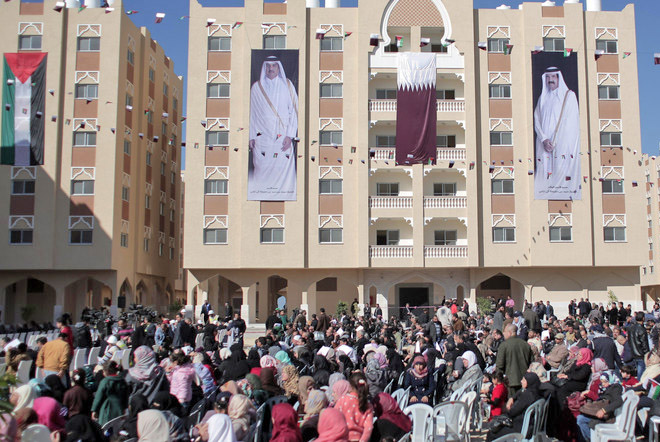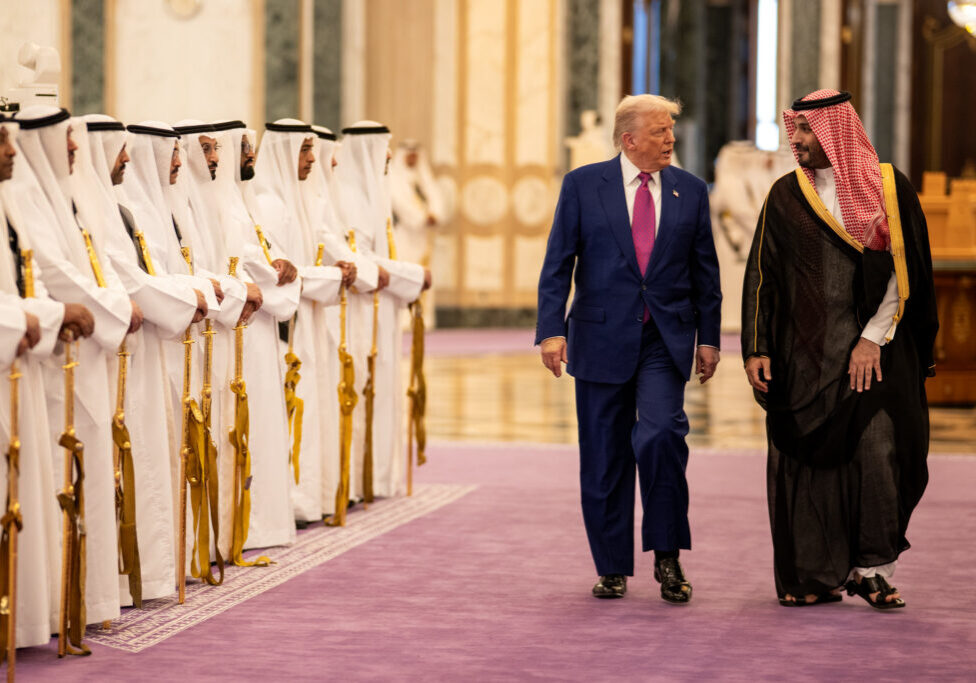Australia/Israel Review
Taking Gaza poverty to the bank
Mar 31, 2016 | Avi Issacharoff

Avi Issacharoff
There’s been a lot of talk in the international media about the slow pace of rebuilding in the Gaza Strip, where some 100,000 people still don’t have housing following the summer 2014 war between the IDF and Hamas-led groups in Gaza.
But what most people haven’t heard is that new homes are being built, slowly, for the 17,000 or so families whose houses were totally destroyed.
Or at least that’s how it looks on paper.
In actuality, the homes, donated by Qatar, are being practically given away to Hamas cronies while others have to pay off the terror group to put a roof over their heads – one of myriad ways Hamas is exploiting the humanitarian crisis in the Strip to pad its own coffers.
Muhammad Al-Amadi, a Qatari envoy charged with overseeing the emirate’s funding of Gaza’s rebuilding, recently inaugurated a new neighbourhood near Khan Younis in the southern Strip, completely paid for by his country. “Hamad City”, named in honour of the father of the current ruler of Qatar, constitutes some 1,040 new housing units for Gaza’s homeless.
The Hamas Government instituted a lottery in which those who had no home could register to win apartments for free.
But that was not what was really going on.
The winners discovered to their amazement that they were required to pay Hamas US$40,000 for each apartment. One claim was that a significant sum was needed to connect the homes to infrastructure such as water and electricity. Others were told that they needed to make a donation for those who were still left homeless.
US$40,000 is cheap for a new apartment, but it’s still a princely sum in Gaza, where unemployment is rampant and the average person makes $174 a month, according to a 2014 UNRWA report. At the end of the day, Hamas will be US$36 million richer on Qatar’s dime.
Why not US$41 million? According to Palestinian sources, some 150 of the lottery winners had the US$40,000 fee waived because they are considered “close to Hamas.”
The housing saga caused considerable anger against the group, but it’s not the only area in which Hamas is oppressing its own people and sparking animosity.
While Gaza doesn’t have a lot of land for farming, it does have ample access to the sea, and fishing has always been one of the Strip’s strongest industries.
Yet fisherman have been hamstrung to some extent by Israeli restrictions on how far they can go out because of the concern over smuggling, among other reasons.
Israeli security forces even seize the vessels of those fishermen who stray beyond the permitted fishing boundary. But once the boat is returned to the Strip after any suspicion is cleared, Hamas forces the owner to pay a tax to get it back.
Residents are also made to pay a tax any time they need the help of a policeman.
Despite the delays in paying the wages of Hamas government employees, the members of the military wing – some 40,000 in number, including police – continue to be paid, though the money comes from Iran and not from those fees.
And the group doesn’t reach only into people’s wallets, but also into their medical charts. It’s no secret that in Gaza, for a certain amount of money, you can get a note from a senior doctor for urgent medical treatment in the West Bank or even in Israel. Hamas uses those who have these permits to transfer cash or messages to operatives in the West Bank.
All the while, the international community focuses on economic hardship in the Strip caused by the Israeli and Egyptian blockade, while seemingly casting a blind eye on Hamas, which raises funds on the backs of the Strip’s residents and invests tens of millions of dollars each month on building up its fighting force, digging attack tunnels that may stretch into Israel and manufacturing rockets.
According to Israeli estimates, each year, Hamas invests nearly NIS 100 million (US$25 million) alone on smuggling materials for manufacturing weapons and setting up tunnels.
Gaza trader Usama Zuarub, for example, bought nearly US$30 million of steel on behalf of Hamas. Just the communications equipment that Hamas buys each year comes to NIS 8-9 million (US$2 to 2.5 million).
Most of those smuggled materials come into the Strip via the Kerem Shalom crossing with Israel.
According to recent statistics on the Israeli side, each day some 650-700 trucks go through the crossing, many of them carrying goods from around the world, shipped via Israeli or Egyptian ports.
Israel inspects the goods before they go into Gaza, and hardly a week goes without the discovery of smuggled materials used either for digging tunnels or manufacturing rockets.
The amount is huge: tons of steel wire, for example, that is used in tunnel construction, radio and communications equipment, steel, motors, fibreglass and more.
Recently, Israeli authorities even discovered electrodes packed into butter shipped from a Ramallah factory.
All that is aside from the military uses Hamas makes of construction materials such as cement and wood that are brought into Gaza for the purpose of rehabilitating homes, the very homes that were destroyed in that last war.
Avi Issacharoff is Middle East analyst at the Times of Israel. © Times of Israel (www.timesofisrael.com) reprinted by permission, all rights reserved.
This article is featured in this month’s Australia/Israel Review, which can be downloaded as a free App: see here for more details.
Tags: Gulf states






